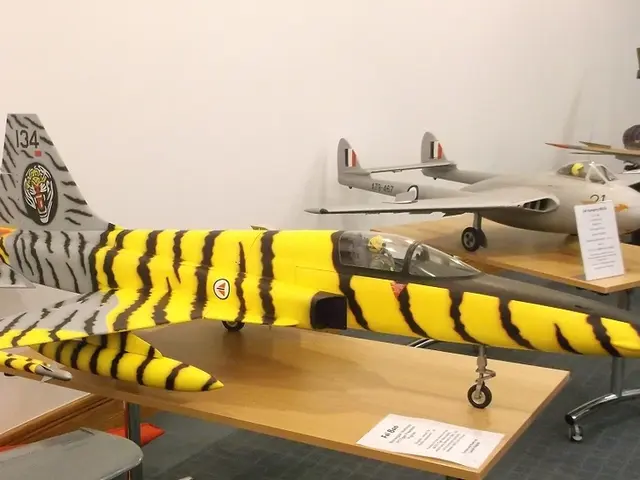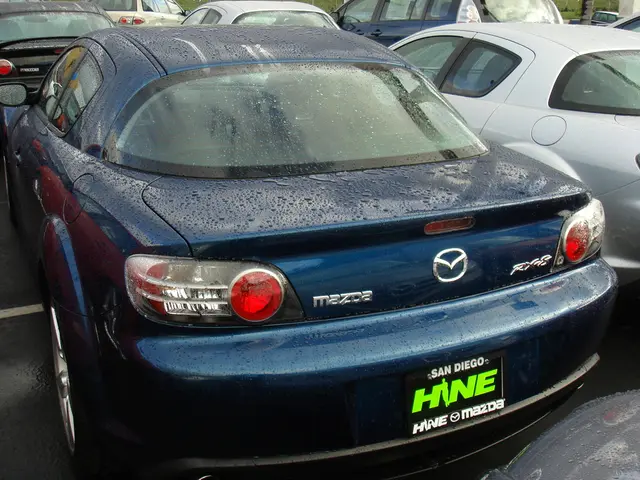Aerial Shots Reveal Over 175 Aircraft Participating in Extensive Agile Combat Drill
The Air Force's advanced combat readiness exercise, Bamboo Eagle, returned for its second installment, spanning over 175 aircraft and 10,000 personnel from four countries. This collaboration marked the latest large-scale exercise undertaken by the Air Force.
Concurrently, Bamboo Eagle followed the culmination of a Red Flag exercise, incorporating multi-domain warfare and Agile Combat Employment strategies to spearhead the premier air dominance exercise. The eight-day event, led by the Air Force Warfare Center, concluded on February 15. Its focus centered on rearming and refueling combat aircraft in austere, high-threat environments.
Lending their support were the U.S. Air Force, U.S. Marines, Royal Air Force (RAF), and Royal Australian Air Force (RAAF). This year, the Royal Canadian Air Force (RCAF) made its debut as a participant, contributing to the command and control aspect.
Multiple B-2 Spirit bombers from Whiteman Air Force Base, Missouri, and a B-52 Stratofortress from Barksdale Air Force Base, Louisiana, executed operational integration exercises alongside fighters and other aircraft. The B-2s from the 393rd Expeditionary Bomb Squadron rehearsed long-range deep-strike missions.
In a statement, Lt. Col. Joseph Manglitz, commander of the 393rd Expeditionary Bomb Squadron, emphasized the value of the exercise, stating, "This exercise was a real test for the B-2. It's one thing to train at home-and we train hard at home-but it's even better to bring a subset of our base on the road here and work together to generate airpower alongside the rest of the combat air force and our allies."
The list of aircraft involved in the exercise included bombers, fighters, mobility aircraft, command and control platforms, ISR drones, electronic warfare assets, search and rescue aircraft, and several more. The participants represented the F/A-18 Super Hornet, F-35 Lightning II A & B variants, F-16 Fighting Falcon, F-15E Strike Eagle, Typhoon FGR4, C-17 Globemaster III, C-130 Hercules, KC-46 Pegasus, KC-135 Stratotanker, E-3 Sentry, RAAF E-7 Wedgetail, HH-60W Jolly Green II, HC-130J Combat King II, MQ-9 Reaper, RC-135 Rivet Joint, EC-130H Compass Call, and E/A-18 Growler.
Four different F-35 units participated in the exercise, which tested their integration with other platforms and allowed F-35 pilots to hone their offensive and defensive counter-air skills, execute long-range Pacific flights, and escort assets while neutralizing surface-to-air threats.
With the Agile Combat Employment concept, teams operated from hub-and-spoke locations distributed across California, Hawaii, Guam, and other areas. By centralizing key resources at a hub while dispersing smaller teams to spoke locations, the exercise tested the teams' ability to dynamically deliver airpower with limited personnel and resources.
Group Captain Stewart Seeney, who led the RAAF contingent, commented, "Exercise Bamboo Eagle … replicated the challenges of conducting long-range missions in the Indo-Pacific, including how we integrate aircraft and other systems across all domains." His remarks highlighted the exercise's vital role in providing aviators with a complex and realistic training opportunity.
As reported in the Enrichment Data, the Royal Canadian Air Force (RCAF) has a history of involvement in international exercises and operations. However, specific details about their role in Bamboo Eagle 25-1 were not found amongst the provided search results.
- The Air Force Warfare Center led the second installment of the Bamboo Eagle exercise, which featured warfare in space with the participation of the Space Force.
- The Air Force's advanced combat readiness exercise, Bamboo Eagle, involved over 175 aircraft and 10,000 personnel from the Air Force, Marines, Royal Air Force (RAF), Royal Australian Air Force (RAAF), and the new addition, the Royal Canadian Air Force (RCAF).
- In the Agile Combat Employment strategy of Bamboo Eagle, teams utilized hub-and-spoke locations in California, Hawaii, Guam, and other areas, demonstrating their ability to dynamically deliver airpower with limited personnel and resources.
- The U.S. Air Force's B-2 Spirit bombers, alongside a B-52 Stratofortress, practiced operational integration exercises, focusing on long-range deep-strike missions.
- The aerospace industry was well-represented in the Bamboo Eagle exercise, with the participation of various types of bombers, fighters, drones, mobility aircraft, command and control platforms, and electronic warfare assets, among others.
- Financing and budgeting for the Bamboo Eagle exercise and other large-scale Air Force operations were not explicitly discussed, but the industry's involvement suggests substantial investments in this sphere.








